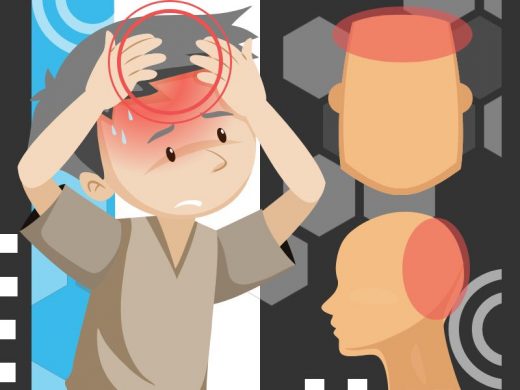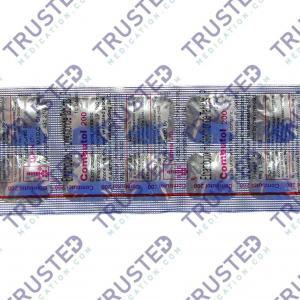
Migraine is a neurological condition that is often moderate to severe headache. It causes severe throbbing pain or a pulsing sensation.
Migraine with aura is a recurring headache that strikes after or at the same time as sensory disturbances called an aura. These disturbances can include flashes of light, blind spots, and other vision changes or tingles in your hand or face.

Types of Migraine with Aura
- Migraine with aura. It occurs without causing a headache. It is also known as classic migraine.
- Migraine with brainstem aura. It is when the aura starts in the base of your brain.
- Hemiplegic migraine. The aura causes weakness on one side of your body.
- Retinal migraine. You have vision changes in one eye before the migraine begins.
Symptoms of Migraine with Aura
- Headaches along with cravings of specific foods
- Felling hyper or cranky
- Tiredness
- Stiffness in the neck
- Peeing more often
- Diarrhea or constipation
- Blind spots
- Vision loss in part of one or both eyes
- Seeing zigzag pattern
- Seeing flashing lights
Other symptoms of migraine with aura include:
- Prickling, tingling, or numbness
- Trouble finding words or speaking
- Upset stomach or vomiting
- Hot flashes and chills
- Stuffy or runny nose
- Dizziness
- Sore neck or jaw
- Sensitivity to light, sounds, smells, and touch
- Confusion
- Muscle weakness
Can You Have an Aura Without Headache?
An aura without migraine can occur without headaches. It is known as silent migraine and they are disruptive to daily activities. Migraine with aura and retinal migraine are types of ocular migraine. Migraine attacks that occur without pain may sometimes.
Risk Factors of Migraine with Aura

- Alcohol and caffeine consumption
- Exposure to bright lights
- Food additives
- Hormonal fluctuations during menstruation or pregnancy
- Strenuous exercise
- Lack of sleep or too much sleep
- Medications
- Stress
- High blood pressure
- Inhaling smoke, gasoline, and other strong scents
- Barometric pressure changes
Other Factors that Can Trigger Migraine with Aura
- Gender. Females are two to three times more likely than males to experience migraine.
- Age. Migraine with aura is typical in 18 to 44 years old.
- Family history. Around 90% of people with migraine have a family history of the condition.
How to Diagnose Migraine with Aura?
The diagnostic process depends on the signs and symptoms you experience. Your doctor will also recommend the following:
- An eye examination. It can help rule out eye problems that might be causing visual symptoms and headaches.
- Head computerized tomography (CT) scan. It is an imaging technique that produces detailed images of your brain.
- Magnetic resonance imaging (MRI). It produces images and determine the cause of diagnosis.
Treatment for Migraine with Aura
Treatment in migraine with aura prevents future attack. Ensure to take your medications to reduce the severity of the condition. You can have:
- Aspirin
- Ibuprofen
- Triptans









